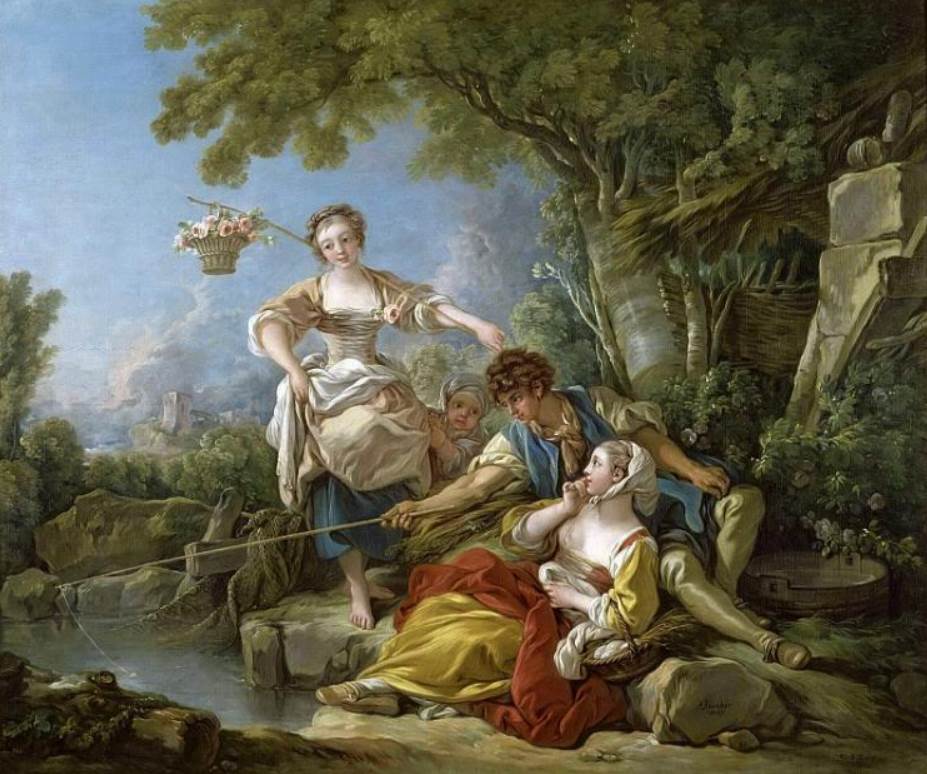A new art movement emerged during the final decades of the Ancien Régime that represented the decadence of life at the French court. The paintings of the Rococo artists of the 18th century depicted the carefree attitude caused by the extreme luxury that eventually lead to the downfall of the French monarchy.
François Boucher 1703-1770), the court painter at the time had no choice but to accept the commissions from the courtiers during the final decades before the French Revolution. His works mostly revolved around allegories of classical and mythological subjects, portraits, and pastoral scenes.
Let’s take a closer look at some of the most famous François Boucher paintings, Rococo artworks that define the most frivolous art movement in history.
1. Rinaldo and Armida
- Date created: 1734
- Dimensions: 135,5 x 170,5 centimeters (53.34 x 67.12 inches)
- Location: Louvre Museum, Paris, France
Rinaldo and Armida is an important painting in the oeuvre of Françcois Boucher and was just after he returned from Italy. He had won the Grand Prix of Rome in 1720 which allowed him to study in the Italian capital for 5 years, although it took nearly 5 years after he won for him to arrive.
This painting as his so-called “morceau de réception” or “reception piece” and got him accepted at the Académie de peinture et de sculpture. It depicts a story of two lovers derived from a 16th-century poem by Torquato Tasso that takes place during the First Crusade in Jerusalem.
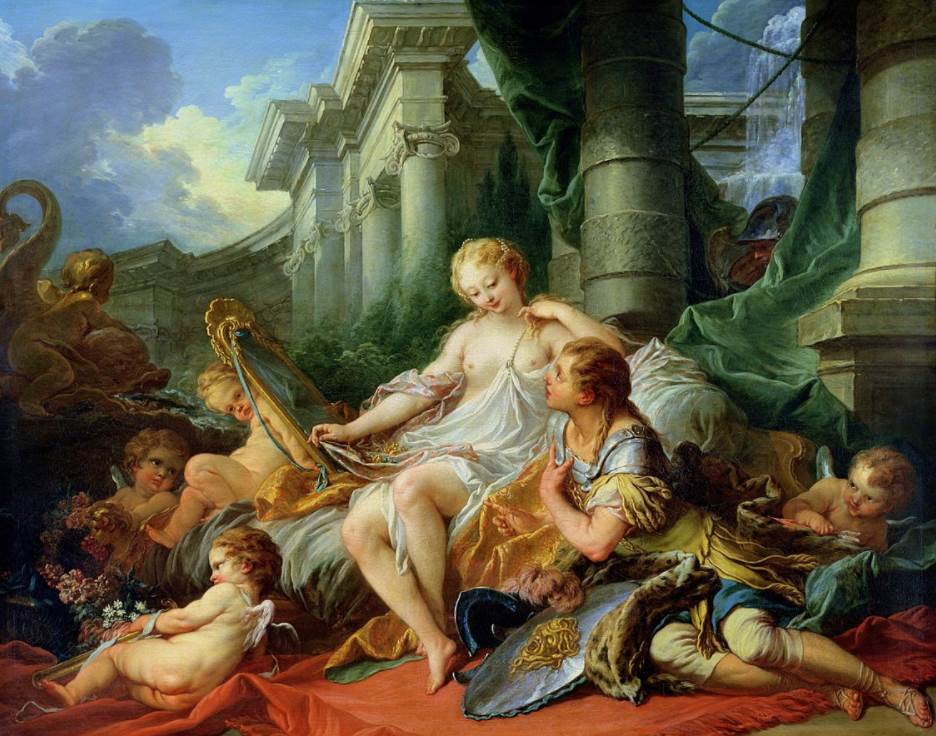
2. Portrait of Madame de Pompadour
- Date created: 1756
- Dimensions: 212 x 164 centimeters (83.46 x 64.56 inches)
- Location: Alte Pinakothek, Munich, Germany
The portrait of Madame de Pompadour depicts a woman named Jeanne Antoinette Poisson, Marquise de Pompadour (1721-1764), the principal mistress of King Louis XV who had a great influence on both the king and other courtiers.
She was also the principal patron of François Boucher and helped to establish the frivolous Rococo genre. Therefore, both the names of Boucher and Pompadour are synonyms of this art movement. This is one of the numerous portraits of the woman painted by the artist.
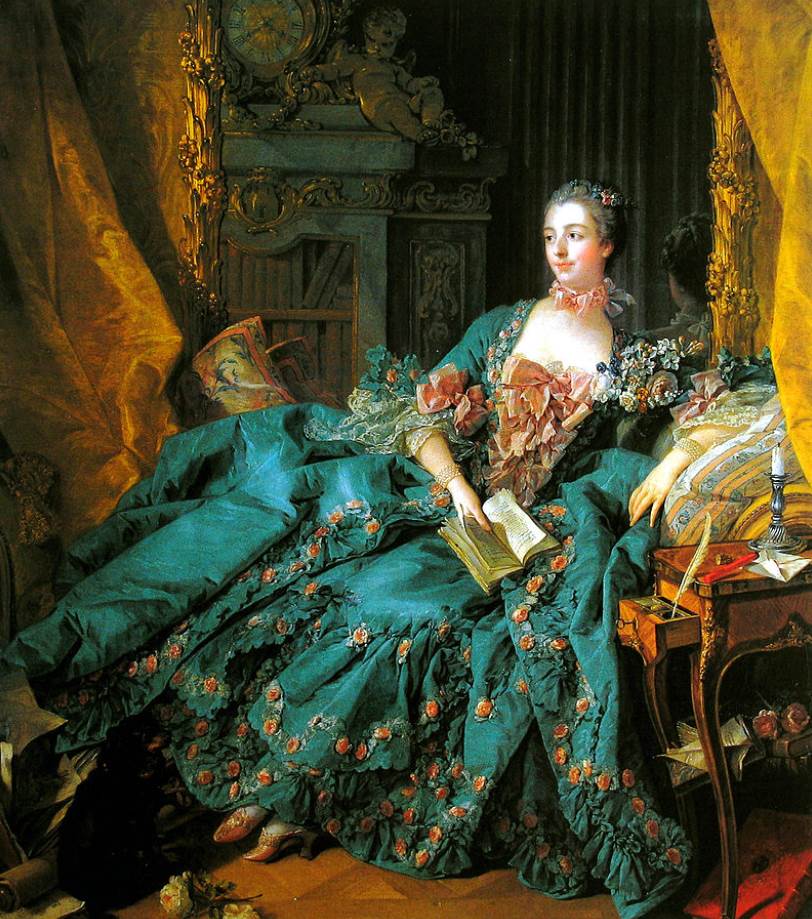
3. The Triumph of Venus
- Date created: 1740
- Dimensions: 130 × 162 centimeters (51 × 64 inches)
- Location: Nationalmuseum, Stockholm, Sweden
The Triumph of Venus depicts a mythological scene in which the Roman goddess Venus is glorified. It’s one of the most famous François Boucher paintings and served as the inspiration for a painting by Jean-Honoré Fragonard called “The Birth of Venus.” Fragonard (1732-1806) was another renowned Rococo artist of the 18th-century.
The painting was commissioned by a Swedish politician and a Count named Carl Gustaf Tessin (1695-1770). After the man got into financial trouble he was forced to sell the painting to the king of Swedish and this is how it ended up in the country’s national museum.
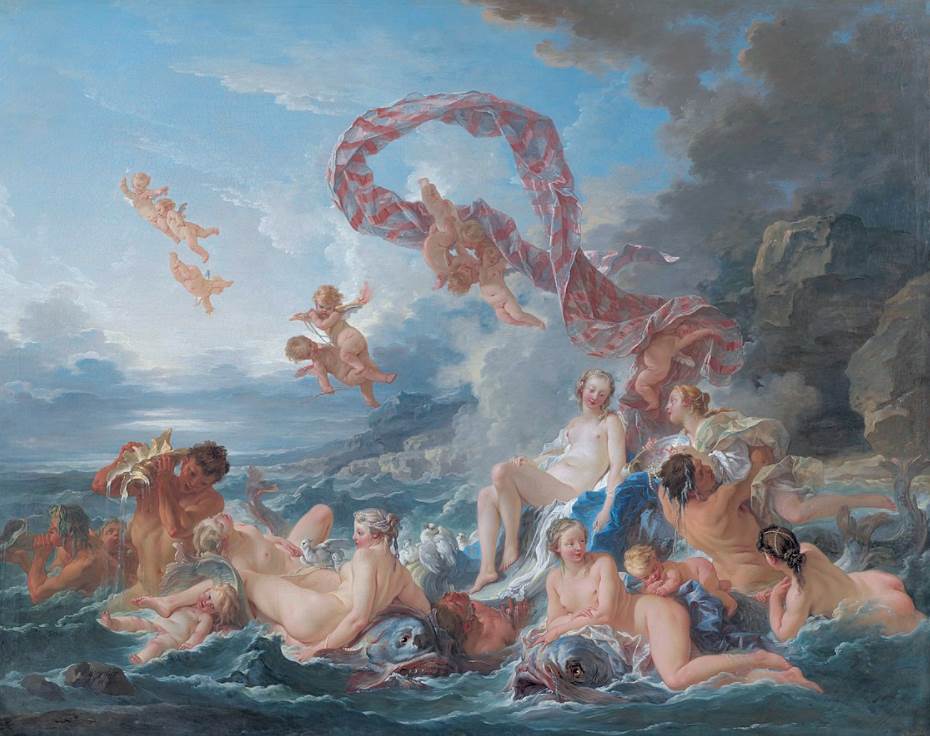
4. Diana Bathing
- Date created: 1742
- Dimensions: 57 × 73 centimeters (22 × 29 inches)
- Location: Louvre Museum, Paris, France
Diana Bathing is also sometimes referred to as “Diana Leaving the Bath” and depicts the Roman goddess Diana along with one of her servants. She is the goddess of the countryside and hunting in ancient Roman and Greek Mythology.
Boucher integrated hunting dogs and caught birds to identify the goddess. It’s one of the many Boucher paintings that is part of the immense collection of the Louvre, although the museum only acquired it in 1852, exactly a century after it was completed.
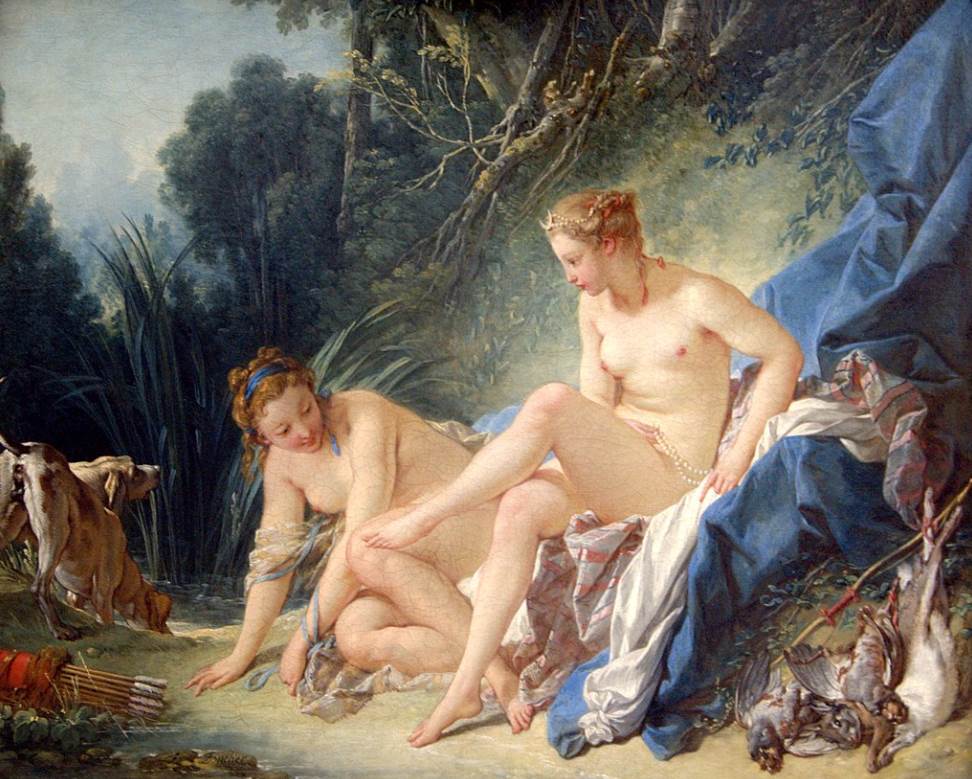
5. Vulcan Presenting Venus with Arms for Aeneas
- Date created: 1757
- Dimensions: 320 × 320 centimeters (130 × 130 inches)
- Location: Louvre Museum, Paris, France
Vulcan Presenting Venus with Arms for Aeneas is a large square painting that depicts the Roman god of fire Vulcan as he presents weapons he created for the son of the Roman goddess Venus named Aeneas.
Boucher wasn’t just a renowned painter but also designed tapestries. This was one of the paintings he produced that inspired him for creating a set of tapestries called “The Loves of the Gods.”
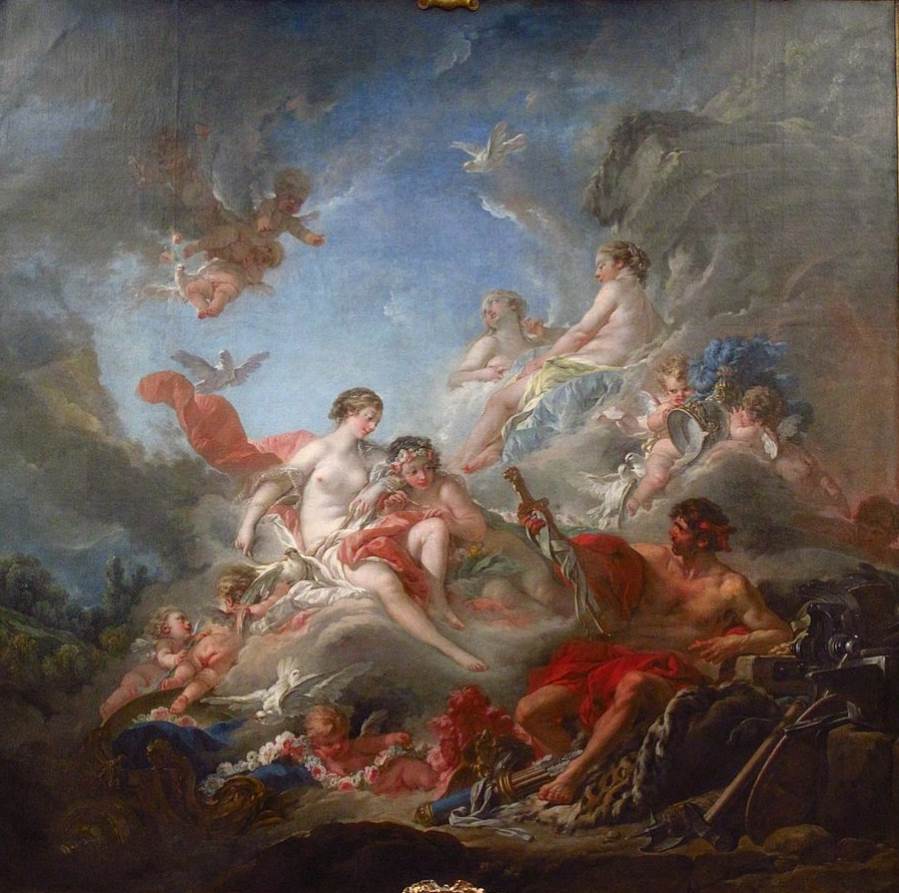
6. Venus Consoling Love
- Date created: 1751
- Dimensions: 107 × 84.8 centimeters (42 × 33.4 inches)
- Location: National Gallery of Art, Washington, D.C., United States
Venus Consoling Love depicts the Roman goddess Venus as she is in the process of taking away Cupid’s arrows, the famous tools he uses to make people fall in love. It’s one of the ultimate representations of the Roccoco style with exaggerated beauty in an idyllic setting.
The painting was commissioned by Madame de Pompadour and even though there’s no definite evidence for the claim, it has been suggested that she was the one who posed for the work. It’s one of the famous paintings by François Boucher that can be admired in the United States.
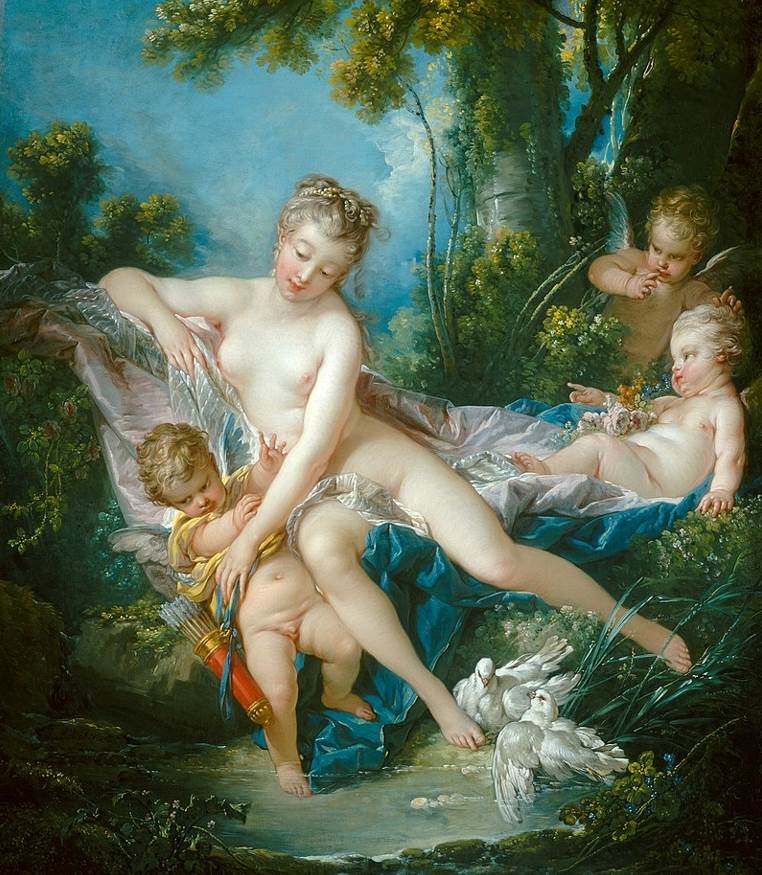
7. Jupiter and Callisto
- Date created: 1759
- Dimensions: 57.79 × 69.85 centimeters (22.75 × 27.50 inches)
- Location: Nelson-Atkins Museum of Art, Kansas City, United States
Jupiter and Callisto is another painting depicting a mythological subject, this time the king of the gods named Jupiter who attempts to seduce Callisto, a nymph and the daughter of King Lycaon. He does so while being disguised as the Roman goddess Diana.
The work painted in 1759 is located in the Nelson-Atkins Museum of Art and is the second version of the same subject painted by the artist. The other version was completed 15 years earlier in 1745 and is part of the collection of the Pushkin Museum in Moscow, Russia.
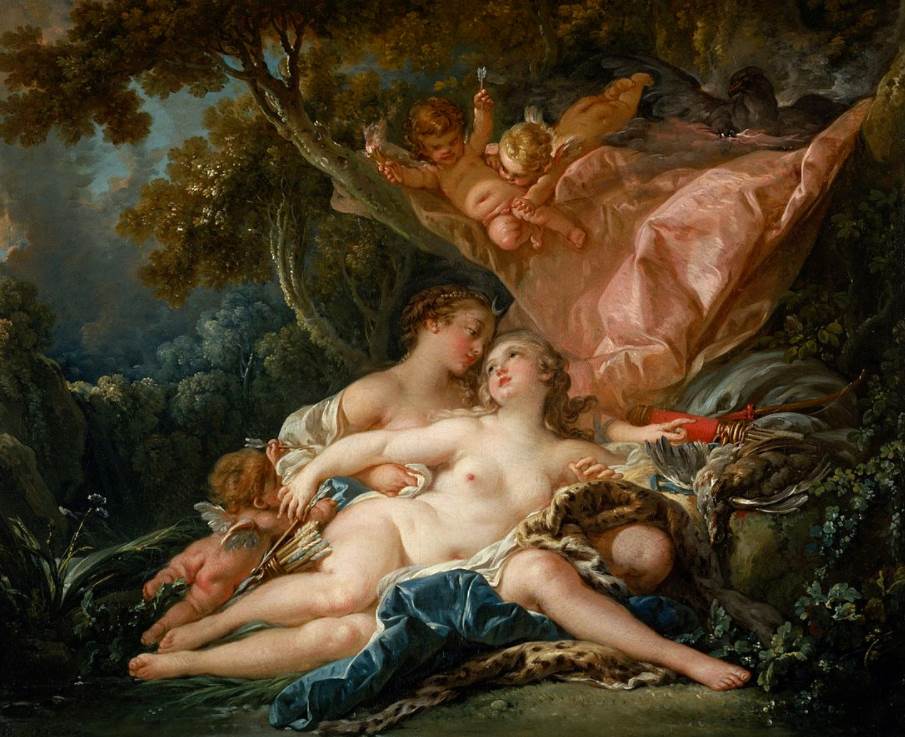
8. Pastoral with a Couple near a Fountain
- Date created: 1749
- Dimensions: 198 × 259 centimeters (78 × 102 inches)
- Location: Wallace Collection, London, United Kingdom
Pastoral with a Couple near a Fountain is also known as the “Autumn Pastoral” and is considered to be one of the most famous pastoral paintings that Boucher produced.
The large painting depicts a young couple in a completely imaginary setting near a fountain. The shepherd next to the couple was derived from an etching produced by Rembrandt, the famous Dutch artist of the Dutch Golden Age
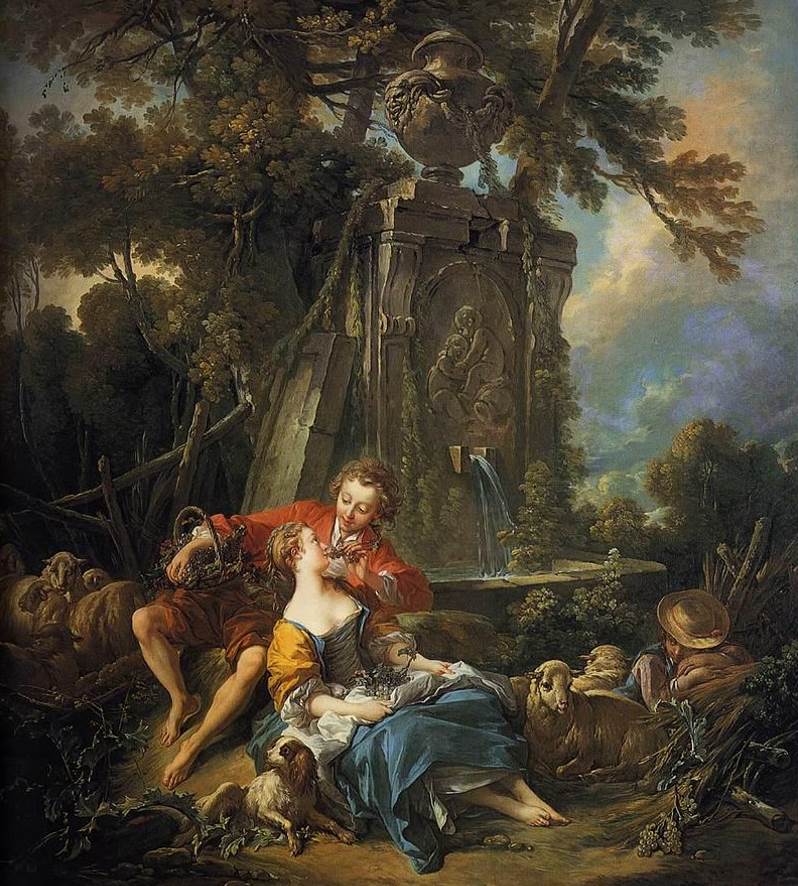
9. The Blonde Odalisque
- Date created: 1751 / 1752
- Dimensions: 59.5 x 73.5 centimeters (23.4 x 28.9 inches)
- Location: Wallraf–Richartz Museum, Cologne, Germany / Alte Pinakothek, Munich, Germany
The Blonde Odalisque is the title of two separate portraits that presumably depict a young girl named Marie-Louise O’Murphy (1737-1814), a prostitute of Irish descent who became a lesser mistress of King Louis XV.
The paintings are located in Cologne and Munich and were respectively produced in 1751 and 1752. The morality of the King of France wasn’t yet at the standard of modern times because the girl was only 15 or 16 years old when she was his mistress and was painted by Boucher.
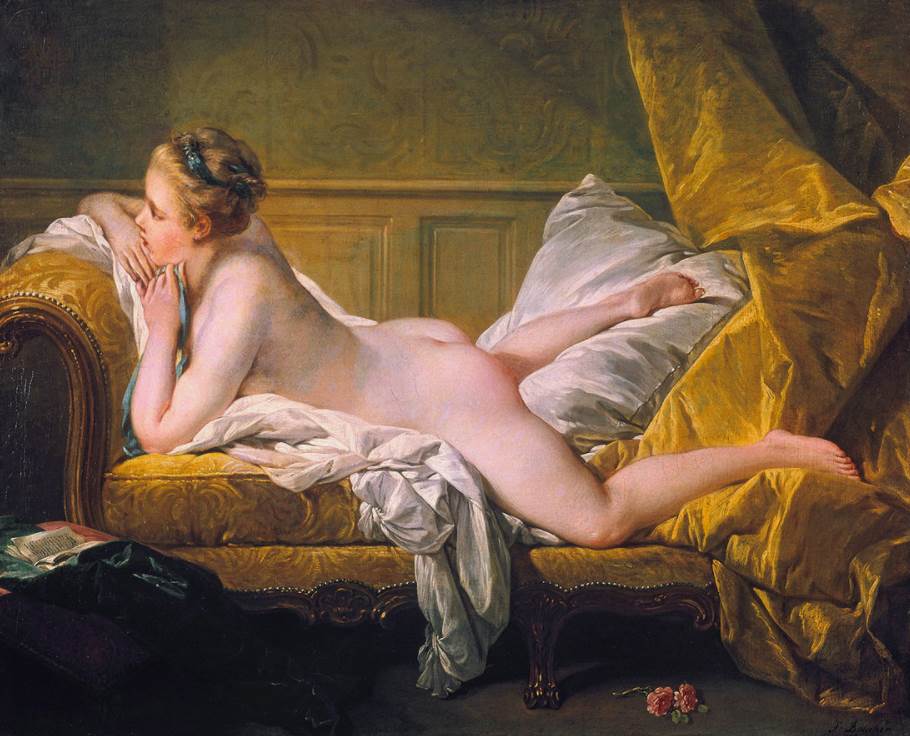
10. Fishing
- Date created: 1757
- Dimensions: 150 × 188 centimeters (59 × 74 inches)
- Location: Grand Trianon, Versailles, France
Fishing or “La pêche à la ligne” as it’s referred to in French is another overly idealized depicting a couple and an accompanying girl and child as they are fishing in a small river.
It’s one of the few famous François Boucher paintings that didn’t move too far because it’s part of the collection of the Grand Trianon, the pleasure retreat of King Louis XIV in the northwestern section of the immense Domain de Versailles.
